About
Welcome letter
Dear ÖGMBT Members,
Dear Colleagues,
We are pleased to announce the 16th ÖGMBT Annual Meeting to take place in Graz on September 17-19, 2024, under the title:
“Life Sciences - Tackling the Challenges of the 21st century”
With the developing 21st century, our modern societies are facing novel and multiple challenges. Life sciences and biotechnological advances are likely to provide solutions to at least some of these problems. Among them, age-associated diseases are still on its rise, antibiotic resistance complicates the treatment of infectious disease, and obesity as well as its associated metabolic pathologies became pandemic in recent years. Sustainable, commercially feasible solutions to secure availability of natural resources for a still growing population and concomitant reduction of the ecological footprint of our society are urgently required. In the upcoming Annual Meeting, we will address and discuss these challenges across the scientific disciplines of molecular- and biotechnological sciences.
The meeting will kick-off with the bestowal of the prestigious “Life Sciences Awards Austria 2024” and presentations by the awardees.
Over the duration of the scientific meeting, we have compiled a program that broadly covers diverse disciplines within the Life Sciences. Invited plenary speakers will share state-of-the-art research and young scientists will present their work in talks and posters. Poster sessions, breaks, and social functions, like the cherished “Wine & Science” evening, will provide ample opportunity for networking and discussions with speakers and colleagues. Associated workshops preceding the meeting (Sep 16th) provide further opportunities for specialized training and young researchers’ networking.
The ÖGBMT Annual Meeting is the melting pot of the Life Sciences in Austria. In this meeting you can expect to expand your horizon by learning about technologies and disciplines outside of your immediate field of focus, to meet colleagues with complementary expertise and future collaboration partners, and to encounter faculty and students that may become your next employer or employee. Altogether, we look forward to great science, open discussions, and networking.
See you in Graz!
Sincerely,
Harald Pichler, Helmut Bergler, and Tobias Eisenberg
Chair Scientific/Organizing Committee
Plenary & invited speakers
|
Eric de Groot 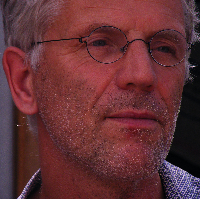
MindMeeting BV, NL
|
CECILIA DOMINGUEZ CONDE 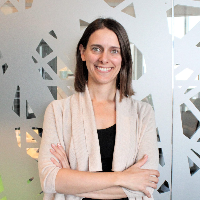
Human Technopole, IT
|
|
Susan Gasser 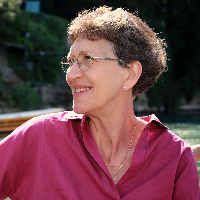
ISREC Foundation and University of Lausanne, CH
|
Johannes Grillari
Ludwig Boltzmann Institute for Traumatology, AT
|
|
Susan Howlett 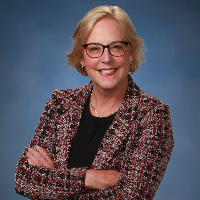
Dalhousie University, CA
|
Elina Ikonen
University of Helsinki, FI
|
|
Sebastian Leidel 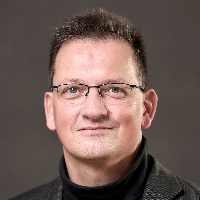
University of Bern, CH
|
Nataliia Maronchuk 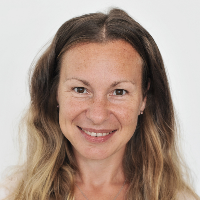
Medical University of Innsbruck, University Clinic for Psychiatry I, AT
|
|
Andy Martin 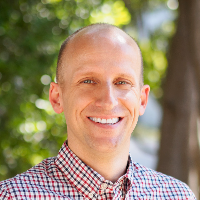
UC Berkeley, Howard Hughes Medical Institute, US
|
Anne Müller
Universität Zürich, CH
|
|
Carol Munro 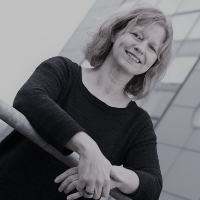
University of Aberdeen, GB
|
Pavel Mykhailiuk 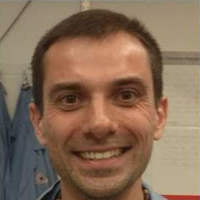
Enamine, UA
|
|
Wilfried Posch 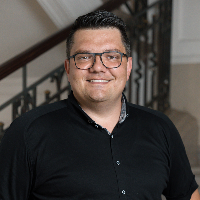
Medical University of Innsbruck, AT
|
Florian Schur 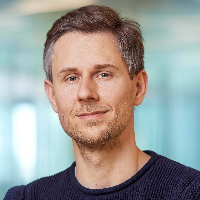
Institute of Science and Technology Austria, AT
|
|
Nektarios Tavernarakis 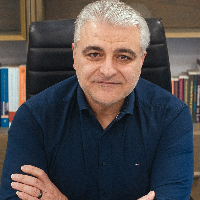
1. Foundation for Research and Technology - Hellas. 2. University of Crete., GR
|
Anouk Willemsen 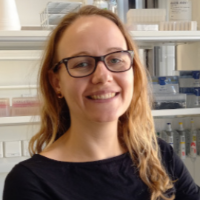
University of Vienna, AT
|
|
Juliane Winkler 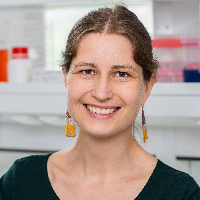
Medical University of Vienna, AT
|
Christa Schleper
University of Wien, AT
|
|
Valter Longo
University of Southern California, US
|
Georg Gübitz
BOKU University, AT
|
|
Gustav Vaaje-Kolstad
Norwegian University of Life Sciences, NO
|
|
Expand your horizon
The ÖGMBT Annual Meeting is one of the most significant scientific events in Austria in the molecular biosciences. Topic wise it is a very broad event, including medical aspects of the life sciences, applied aspects and a diverse set of basic research. It is a good mix of invited international talks and talks by students (all in English), a company trade show including exhibitors quiz and many networking activities.
It is a true melting pot bringing together top experts for exchange, showcasing the work of early career researchers, helps the attending students get a notion of the field and allows everyone a look beyond the horizon of their own specialization and shows what is happening in Austria in the field of life sciences.
Who should attend?

Bachelor/Master students
- NEW: Free registration at the three-days meeting for Bachelor and Master students who are ÖGMBT members
- Get an overview of the Austrian life sciences community and first hand insights about career opportunities
- Meet representatives from academia & industry and start your network
- Find your next exciting project or internship and connect with peers from related life sciences fields
- Participate at exclusive career-related workshop
- Learn about the most recent research in Austria and trending scientific topics
- Listen to winners of the Life Sciences Awards Austria 2024
PhDs/Postdocs
- Meet key players from academia & industry and get invaluable personal contacts for your career
- Find your next position or collaborators from related life sciences fields
- Submit an abstract for the possibility for a short talk or poster presentation including a chance to win best posters or best talk prizes
- Listen to sessions organized by PhD students and YLSA volunteers
- Learn about the most recent research in Austria and trending scientific topics
- Listen to winners of the Life Sciences Awards Austria 2024
Group Leaders/Professors
- Establish new research collaborations with new group leaders and industrial partnerships
- Update your insights on current research trends in Austria and cutting-edge technologies used in different life sciences disciplines
- Find your next interns, PhD students or Postdocs among the meeting’s attendees
Industry
- Find new costumers for your products & services and strengthen your market position
- Make high-quality contacts with stakeholders in academia yielding new paths of cooperation
- Contribute to the scientific program as speaker by submitting abstracts describing your recent research
- Present your company as exhibitor and take part in the exhibitor quiz
- Support the ÖGMBT by being sponsor
Join the ÖGMBT
Become an ÖGMBT-member and take advantage of lower registration fees. Click HERE for information on ÖGMBT membership benefits and subscribe for membership online before registering for the Annual Meeting.
Language
The scientific program of the 16th ÖGMBT Annual Meeting is held in English.
Warning: Participant contact details scam
You may have rceived an e-mail offering to sell participant contact information. ÖGMBT does not share or sell such information with other organizations.
Organizers
The ÖGMBT Office (Austrian Association of Molecular Life Sciences and Biotechnology) is fully in charge of organizing the Annual Meeting. This guarantees continuity and a high standard of organization.
For any further information or inquiries related to the 16th ÖGMBT Annual Meeting feel free to contact us at This email address is being protected from spambots. You need JavaScript enabled to view it.
Chairs
|
Helmut Bergler
Institute for Molecular Biosciences, AT
|
Didac Carmona-Gutierrez
University of Graz, AT
|
Alexander Deutsch
Hämatologie, AT
|
|
Tobias Eisenberg
University of Graz, AT
|
Nikolaus Fortelny
University of Salzburg, AT
|
Magdalena Gerhalter
University of Graz, AT
|
|
Dr Sahar Ghorbanpour
BOKU University, AT
|
Gregor Gorkiewicz
Medical University of Graz, AT
|
David Haselbach
Research Institute of Molecular Pathology, AT
|
|
Sebastian Hofer
Max-Delbrück-Center for Molecular Medicine in the Helmholtz Association (MDC), DE
|
Cornelia Kasper
BOKU University, AT
|
Sabine Kienesberger-Feist
University of Graz, AT
|
|
Günther Koraimann
Universität Graz, AT
|
Robert Kourist
TU Graz, AT
|
Regina Kratzer
Graz University of Technology, AT
|
|
Stefan Kubicek
CeMM Research Center for Molecular Medicine of the Austrian Academy of Sciences, AT
|
Alexandra Lusser
Medical University of Innsbruck, AT
|
Christine Moissl-Eichinger
Medical University of Graz: Medizinische Universitat Graz, AT
|
|
Tea Pavkov-Keller
University of Graz, AT
|
Brigitte Pertschy
University of Graz, AT
|
Harald Pichler
TUG, AT
|
|
Andreas Prokesch
Medical University Graz, AT
|
Doris Ribitsch
BOKU University, AT
|
Lydia Riepler
Medical University of Innsbruck, AT
|
|
Michael Sauer
OMV AG, AT
|
Sebastian Schwaminger
Medical University of Graz, AT
|
Martina Schweiger
University of Graz, AT
|
|
Simon Sedej
Medical University of Graz, AT
|
Joachim Seipelt
Nuvonis Technologies GmbH, AT
|
Angela Sessitsch
AIT Austrian Institute of Technology, AT
|
|
Ulrich Stelzl
University of Graz, AT
|
Jelena Tadic
University of Graz, AT
|
Katrin Watschinger
Medical University of Innsbruck, AT
|
|
Viktoria Weber
University for Continuing Education Krems, AT
|
Juliane Winkler
Medical University of Vienna, AT
|
Eric de Groot, MindMeeting BV, NL

Eric de Groot, MindMeeting BV, is one of the first Meeting Designers. His pioneering work started in 1992; now he caters to the national (Dutch) market in his company De Wet van Thomas and internationally in MindMeeting BV. Thanks to his background in drama he takes a broad, human perspective to meetings and meeting processes. He sees meetings as potentially strong catalysts of success if action is involved in them. “Listening to presentations is only the beginning of learning and change“: he says. His meeting designs involve tailor-made interactions, crowdsourcing and group-work. He calls his live presentations Keyshops. Online he involves participants as good as possible.
Eric regularly conducts workshops and learning sessions for professionals all around the globe. He wrote ‘Into the Heart of Meetings’ referred to as the bible of the changing meeting industry. In 2023 ‘Meetings, by Default or by Design’ was released. A book offering design solutions in 40 different aspects of meetings.
CECILIA DOMINGUEZ CONDE, Human Technopole, IT

Cecilia Domínguez Conde is a Group Leader at the Population & Medical Genomics programme of the Genomics Centre at Human Technopole (HT) in Milan. After training as a pharmacist in the University of Seville, Cecilia went on to do a PhD in Immunology at the Research Centre for Molecular Medicine (CeMM) in Vienna where her work focused on dissecting the genetic cause of molecularly undiagnosed primary immunodeficiencies using exome sequencing. In 2019 Cecilia joined the Teichmann lab at the Wellcome Sanger Institute where her focus has been to dissect the diversity of human immune cell types across lymphoid and non-lymphoid tissues as part of the Human Cell Atlas initiative. Her research group at HT, established in 2022, uses cutting-edge genomic technologies to study developmental immunology in health and disease.
Susan Gasser, ISREC Foundation and University of Lausanne, CH

Susan Gasser studied at the University of Chicago (biophysics) and then completed her PhD at the University of Basel (biochemistry; with G Schatz) before a postdoc at the University of Geneva, where she studied human chromosome structure. She was group leader at the Swiss Institute for Experimental Cancer Research (ISREC) in Lausanne from 1986 – 2001, then professor at the University of Geneva, before leading from 2004 – 2019, the Friedrich Miescher Institute for Biomedical Research in Basel. Under her direction the institute became one of the leading biomedical research institutes in Europe, excelling on topics of neuronal circuitry, epigenetics, cell fate decisions and quantitative biology. Her own research team contributed insights into heterochromatin and genome stability in C. elegans and yeast, until 2021. She is now professor invité at the University of Lausanne and Director of the ISREC Foundation (www.isrec.ch), where she helps foster translational cancer research at the Agora Cancer Research Institute. She participates in numerous review boards and advisory committees in Switzerland, across Europe and in Japan, and actively promotes programs to advance the careers of women scientists.
Johannes Grillari, Ludwig Boltzmann Institute for Traumatology, AT
Susan Howlett, Dalhousie University, CA

Susan Howlett is Professor of Pharmacology and Geriatric Medicine at Dalhousie University in Halifax where she has taught for more than 30 years. Her laboratory is recognized for work on cardiac excitation-contraction coupling. She has discovered profound differences in male and female heart cell function, how these change with age and how sex hormones regulate these processes. Her lab has pioneered the measurement of frailty in naturally aging animals with a novel "frailty index" (FI) tool based on deficit accumulation. Her work shows that maladaptive, age-dependent changes in heart structure and function are better graded by the level of frailty than by age itself. Critically, cardiac aging and frailty are linked to inflammation in a highly sex-specific fashion. Her work shows polypharmacy exacerbates mouse frailty, while deprescribing, exercise or geroprotector drugs attenuate frailty. A translational scientist, she has used results from animal studies to develop a new tool based on lab results (the FI-Lab) to measure frailty in people. As a frequent contributor to prominent journals (H-index 55), editor, reviewer and editorialist, Susan has a wide view of research across the life course in both sexes. Her personal and collaborative experience allows insight into the needs of researchers across the career span. Her mentorship of now generations of young scientists, the great bulk of whom have pursued academic careers, speaks to her ability to inspire young researchers.
Elina Ikonen, University of Helsinki, FI
Sebastian Leidel, University of Bern, CH

Sebastian Leidel is Full Professor of Cellular RNA Biochemistry at the University of Bern. He studied Protestant Theology in Siegen, Marburg, Jerusalem and Heidelberg and Cell and Molecular Biology at Heidelberg University. After completing his master’s thesis at the University of Pennsylvania, he joined the laboratory of Pierre Gönczy at the Swiss Institute for Experimental Cancer Research for his Ph.D, where he studied the role of SAS proteins in centrosome duplication in C. elegans. More and more attracted by biochemistry, he did postdoctoral work at the Institute of Biochemistry at ETH Zurich, where he discovered that ubiquitin-related modifier 1 (Urm1) acts as a sulfur carrier during the modification of cytoplasmic tRNA in eukaryotes. In 2008, he became a lecturer at the Institute of Biochemistry at the ETH Zurich before starting a Max Planck Research Group at the Max Planck Institute for Molecular Biomedicine in Münster in 2009. There he continued his work on tRNA modifications and cellular quality control. He received an ERC Starting Grant in 2012 and was appointed full professor at the University of Bern in 2018. In 2019 he became an elected member of the Academia Europaea.
Nataliia Maronchuk, Medical University of Innsbruck, University Clinic for Psychiatry I, AT

Nataliia Maronchuk, MSc.
University assistant
Clinical Psychologist in specialist training
PhD Student in Medical Psychology
@: This email address is being protected from spambots. You need JavaScript enabled to view it.
EDUCATION
10.2022 – ongoing – PhD Program in Medical Psychology/ Medical University Innsbruck (MUI), Austria
10.2021 – ongoing – Clinical Psychology postgraduate course/ Austrian Academy of Psychology (AAP), Austria
10.2016 – 07.2021 – Master of sciences in Psychology/ UMIT Hall in Tirol, The Tyrolean Private University, Austria
09.1998 – 07.2004 – Master of sciences in economics/ Taras Shevchenko National University of Kyiv, Ukraine
MAIN RESEARCH AREAS AND INTERESTS
Resilience, Coping with stress, Interventions for stress management, effects of electroconvulsive therapy on cognitive function, Affective Disorders, Schizophrenia
Andy Martin, UC Berkeley, Howard Hughes Medical Institute, US

Andy Martin did his undergraduate studies in Biochemistry at the University of Bayreuth, Germany, where he also received his Ph.D. in 2003, focusing on protein folding and directed evolution. From 2003 to 2008 he pursued postdoctoral studies in the Biology Department at MIT, where he investigated the mechanisms of ATP hydrolysis, substrate recognition, and degradation by the bacterial AAA+ protease ClpXP. In 2008 Dr. Martin became a faculty member in the Department of Molecular & Cell Biology at UC Berkeley, and since 2015 he has been an investigator of the Howard Hughes Medical Institute. His research focuses on the structure and function of AAA+ proteases and protein translocases, with a main emphasis on the ubiquitin-proteasome system.
Anne Müller, Universität Zürich, CH
Carol Munro, University of Aberdeen, GB

Carol Munro has a personal chair in Microbiology at the Institute of Medical Sciences, University of Aberdeen and is leader of the Microbiology & Immunity Research Theme. Carol is part of the Aberdeen Fungal Group and has over 25 years research experience investigating human fungal pathogens. Her research focusses on how fungal cell surface components contribute to virulence, host interactions, antifungal drug tolerance and resistance. Prof Munro has published 140 scientific publications, book chapters and reviews. She is Deputy Editor-in-Chief for FEMS Yeast Research, and is on the Microbiology Society’s Impact and Influence Committee.
Over the years Prof Munro’s group have worked with a number of anti-infectives companies through industrial-funded studentships, Knowledge Transfer Partnerships and fees-for-service contracts. Carol, with partners at the Scottish Biologics Facility, has developed a proprietary drug development pipeline and exploited this to discover novel biologics-based antifungal immunotherapeutics that target the fungal cell wall. The team has received funding from Scottish Enterprise, BBSRC iCure Explore programme and Innovate UK for pre-clinical development of their antifungal antibodies with plans to spin-out a company Brigid Biologics.
Pavel Mykhailiuk, Enamine, UA

Pavel was born in Kerch, Ukraine. In 2009 he received PhD in biochemistry from Technical University of Karlsruhe (KIT, Germany) with Prof. Anne Ulrich; and PhD in organic Chemistry from Kyiv National Taras Shevchenko University (Ukraine) with Prof. Igor Komarov.
In 2009, Pavel returned to Ukraine and joined “Enamine” company, where he is currently involved into discovery of novel building blocks for drug design.
Pavel´s research interests include fluoroorganic chemistry, chemistry of diazo compounds, photochemistry and saturated bioisosteres of the benzene. He is co-author of more than 100 peer-reviewed research manuscripts. In 2017, he received Dr.Sci. in organic chemistry from the Kyiv National Taras Shevchenko University.
Wilfried Posch, Medical University of Innsbruck, AT

Wilfried Posch is Associate Professor of Emerging Infectious Diseases and the Head of the Department of Hygiene, Microbiology and Virology at the Medical University of Innsbruck, Innsbruck, Austria. Wilfried studied Molecular Biology and the focus of his PhD was the characterization of host-pathogen interactions. During his research stays at the University College London, London, UK and at the INSERM UMR-S945 in Paris, France, he could further develop his knowledge in infection biology, inflammation and immune regulation. In 2018, he received his Habilitation in Immunology and established a research group at the Institute of Hygiene and Medical Microbiology. He and his team have been working on developing novel strategies for investigating microbial infections using human 3D cell culture models. Due to his ample expertise in T cell immunity, the group is currently also interested in studying adaptive immune responses within 3D cell culture systems.
Florian Schur, Institute of Science and Technology Austria, AT

Florian is an Assistant Professor at the Institute of Science and Technology Austria (ISTA).
His lab aims to integrate cell and structural biology approaches to understand how higher-order protein assemblies are defined by the interplay between inter-molecular interactions and the geometrical/architectural boundary conditions of the biological system. Specifically, the lab studies the molecular organization of mechanisms that control cell migration and viral infection. To this end, the Schur lab develops new approaches in cellular cryo-electron microscopy, including specimen preparation, data analysis and high-resolution structure determination.
The research of Florian’s lab is supported by different national and international grants, including a ChanZuckerberg Initiative grant, an ERC Starting grant and an FWF Emerging Fields grant.
Florian is an EMBO Young Investigator and a recipient of the FEBS Excellence Award.
Nektarios Tavernarakis, 1. Foundation for Research and Technology - Hellas. 2. University of Crete., GR

Nektarios Tavernarakis is Professor of Molecular Systems Biology at the Medical School of the University of Crete. He is also the Chairman of the Board of Directors at the Foundation for Research and Technology-Hellas (FORTH), and Research Director at the Institute of Molecular Biology and Biotechnology (IMBB), where he is heading the Neurogenetics & Ageing laboratory. He has served as Chairman of the European Institute of Innovation and Technology (EIT) Governing Board, as Vice President of the Scientific Council of the European Research Council (ERC), and Director of IMBB. He is a member of the American Association for the Advancement of Science (AAAS), the European Molecular Biology Organization (EMBO), the German National Academy of Sciences (Leopoldina), among others. His work focuses on the molecular mechanisms of necrotic cell death and neurodegeneration, the interplay between cellular metabolism and ageing, the mechanisms of sensory transduction and integration by the nervous system, and the development of novel genetic tools for biomedical research. He has received several notable scientific prizes, including two ERC Advanced Investigator Grants, and an innovation-supporting ERC Proof of Concept Grant. He is the recipient of the EMBO Young Investigator award, the Alexander von Humboldt Foundation, Friedrich Wilhelm Bessel research award, the Scientific Prize for Medicine and Biology, the Excellence in Biomedical Sciences Award, of the Bodossaki Foundation, and many more.
Anouk Willemsen, University of Vienna, AT

My research broadly focuses on virus evolution, genome evolution, and phylogenetics. I pay special attention to virus-host co-evolution, the evolution and origin of specific genes, and the phenotypic consequences of genotypic novelty. Viruses are obligate intracellular parasites infecting organisms across the three domains of life (Archaea, Bacteria and Eukarya). New viruses are continuously being discovered, and it has become apparent that they are virtually everywhere. Viruses are important drivers of ecosystem functioning, as viral infection can influence the evolution of their hosts and other organisms (including other viruses) interacting with these hosts.
Juliane Winkler, Medical University of Vienna, AT

Dr. Juliane Winkler is a Group Leader at the Center for Cancer Research of the Medical University of Vienna. She is a trained Pharmacist and received her Ph.D. from the University of Heidelberg (jointly EMBL, German Cancer Research Center, and Institute of Pathology), where she studied how nuclear transport alterations promote aggressive hepatocellular carcinoma (HCC). In her postdoc at the University of California San Francisco, Dr. Winkler worked with the late Zena Werb and Andrei Goga on the impact of tumor heterogeneity on breast cancer metastasis and developed and applied novel single-cell omics technologies. The Winkler lab is using single-cell omics and spatial technologies to understand the implications of tumor heterogeneity on the formation and progression of metastasis and metastatic niches.






px.png)
























